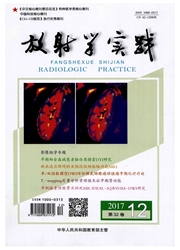

 中文摘要:
中文摘要:
目的:采用静息态功能磁共振成像(rs-fMRI)研究肾移植对终末期肾病患者脑默认网络(DMN)的影响。方法:21例拟行肾移植手术的终末期肾病患者(患者组)和22例健康志愿者(对照组)纳入本组研究。22例健康志愿者及21例患者术前、术后(平均38d,范围25~69d)均行rs-fMRI检查。利用独立成分分析方法分离得到各受试者的默认网络脑区,采用单样本t检验对患者术前和对照组进行组内分析,观察各自的DMN空间分布模式;分别对患者肾移植术前与正常对照组、肾移植后与术前DMN功能连接进行组间比较,观察静息状态下脑默认网络的改变情况。结果:肾移植术前患者组和正常对照组均显示出典型的脑默认网络空间分布模式。与正常对照组相比,肾移植术前患者组默认网络脑区功能连接既有降低也有增高,降低脑区包括双侧额上回、双侧海马旁回、右侧颞中回及颞上回;增高脑区主要位于双侧楔前叶、双侧顶下小叶及内侧前额叶。与肾移植术前相比,肾移植术后患者出现右侧颞中回、双侧内侧额上回及额上回功能连接的增强。结论:终末期肾病患者肾移植术后早期即出现脑默认网络功能连接的增强,提示肾移植可改善终末期肾病患者默认网络脑区的功能。
 英文摘要:
英文摘要:
Objective:To investigate the default mode network (DMN) alteration following kidney transplantation in patients with end stage renal disease (ESRD) using resting--state functional MRI (rs-fMRI). Methods:Twenty one ESRD patients scheduled for kidney transplantation and 22 healthy controls (control group) were recruited in this study. All control subjects underwent rs-fMRI and patients did repeated rs-fMRI examinations before and after kidney transplantation (mean:38 days; range: 25-- 69 days). Group spatial independent component analysis (ICA) was performed to extract the DMN. Independent sample t-test was performed for comparison between patient group before and after kidney transplanta- tion as well as control group to study the inter-group DMN functional brain connectivity patterns with rs-fMRL Results: Typical spatial distributions of the DMN were found in both control group and patient group before kidney transplantation. Compared with control group,there were reduced and increased functional connectivity of DMN regions in ESRD patients. The brain areas with reduced functional connectivity included bilateral superior frontal gyri, bilateral parahippocampal gyri and right middle/superior temporal cortex. The brain areas with increased functional connectivity were mainly located in bilateral precuneus,bilateral inferior parietal cortices and medial prefrontal cortex. Compared with pre-kidney transplantation patients, post-kidney transplantation patients showed increased functional connectivity in right middle temporal gyrus, bilateral superior medial frontal gyri and superior frontal gyri. Conclusion:Increased functional connectivity appears in the early stage following kidney transplantation,indicating that DMN functional connectivity could be improved after kidney transplantation.
 同期刊论文项目
同期刊论文项目
 同项目期刊论文
同项目期刊论文
 期刊信息
期刊信息
